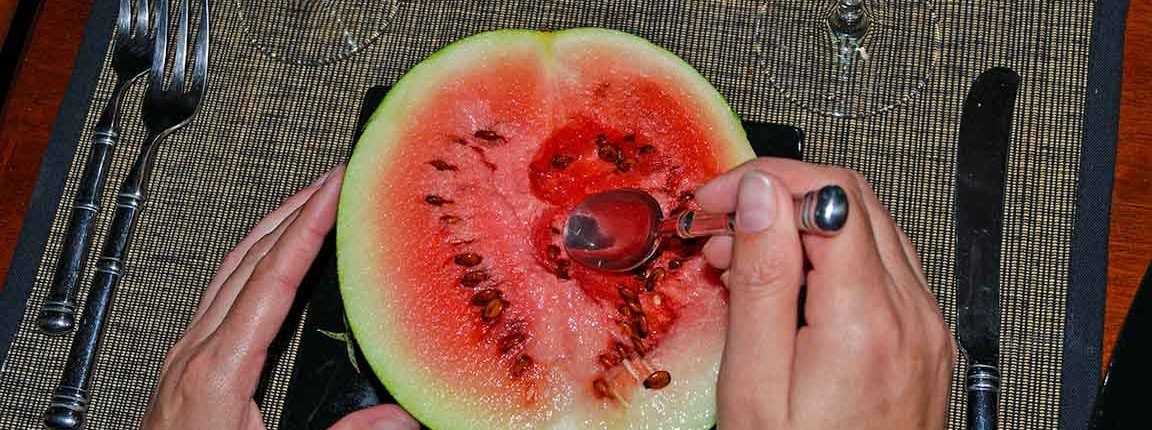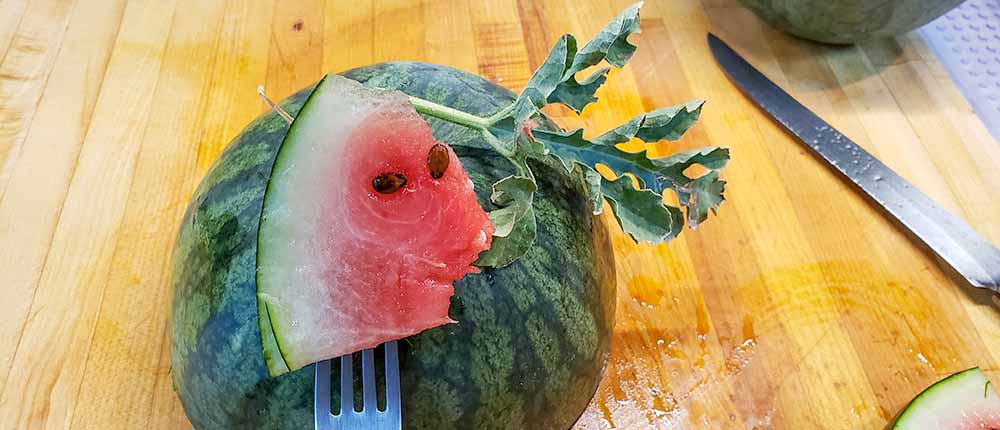The Heirloom Watermelon Challenge
Big Flavor or Bite-Sized Sweetness?
“The true watermelon is … not to be mentioned with common things. It is chief of this world’s luxuries, king by the grace of God over all the fruits of the earth. When one has tasted it, he knows what the angels eat.”
– Samuel Clemons, better known as Mark Twain
Watermelon Basics
We’ve been lucky enough to taste a range of amazing heirloom watermelons at our grower’s farms, from the petite Sugar Baby to the hefty Moon and Stars. Did you know that an unusual thing about watermelons is their seeds are fully mature when the fruit is ripe? That’s different from most fruits, where the seeds often only mature after the fruit is past its prime and inedible.
Heirloom watermelons come in all shapes and sizes. Smaller heirlooms like Early Crimson Treat, Sugar Baby, and Golden Midget are perfect for quick enjoyment and smaller spaces. They will be manageable for your fridge and your garden plot!
On the other hand, varieties like Moon and Stars can reach up to 35 pounds—ideal for feeding a crowd at summer parties. No matter your needs, there’s a perfect heirloom watermelon for you.
Size vs. Flavor
During our taste tests, we discovered something surprising. Usually, more and better flavors belong to the smaller fruits, but the larger watermelons had a deeper, more intense “watermelon” flavor. Their sweetness had a surprisingly complex depth of flavor that lingered on the tongue. While the smaller melons possessed a burst of refreshing sweetness of their own, they didn’t have the same richness and nuanced taste as their larger counterparts. Size does matter when it comes to unlocking the full flavor potential of these heirloom watermelons!
Growing for Optimal Flavor
The secret to the sweetest, juiciest, most flavorful watermelon lies in your own garden. Let those heirlooms fully ripen on the vine for an unforgettable flavor experience that friends and family will discuss for years to come.
Unlike some fruits, watermelons don’t sweeten after they’re harvested—what you see is what you get. Your homegrown ones will reach their full, juicy potential if you follow these simple steps.
Here’s how to tell when they’re ready for the ultimate taste test –
- The Ground Check – Gently check the underside of the melon where it rests on the ground. It’s ready when it changes from pale greenish-white to a rich, creamy yellow.
- Prevent the Rot – If your soil stays moist, slip some straw or cardboard under the melons to prevent them from rotting.
- Dull is Delicious – The rind should lose its bright green sheen, turning deeper, duller green.
- Nature’s Signals – Look for yellowing leaves and a slightly curled stem near the melon – these mean it’s getting close!
Once you see the first signs of ripeness, the others will follow within a couple of weeks. Ease up on the watering slightly for that final flavor boost as they ripen. This concentrates the watermelon’s natural sugars, making it even sweeter!
Heirlooms vs. Hybrids
Modern watermelons result from extensive hybridization, making them easier for commercial growers to pick and ship. Think about seedless watermelons—those wouldn’t exist without hybridization! Unfortunately, this focus on shipping and shelf life often means flavor gets less attention. You’ve probably experienced this with bland, watery supermarket watermelons. Heirloom varieties, on the other hand, with their rich, complex flavors and sweetness, prove that taste should always come first.
Your Watermelon Experiment
Discover the taste difference for yourself! Smaller heirloom watermelons likely originated from their larger ancestors through selective breeding. While still delicious, why not put them to the test? Try growing a larger and smaller heirloom variety this summer for a side-by-side taste comparison. Watermelons are the quintessential summer treat and the perfect excuse to throw a backyard barbecue and share your garden’s bounty with friends and family.


